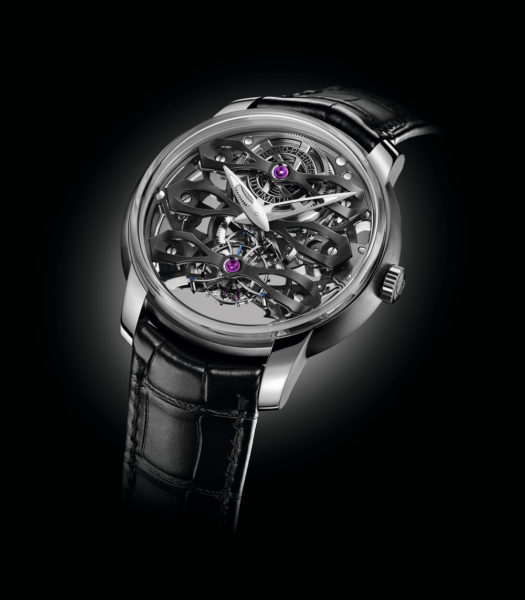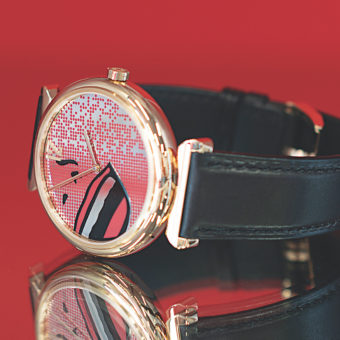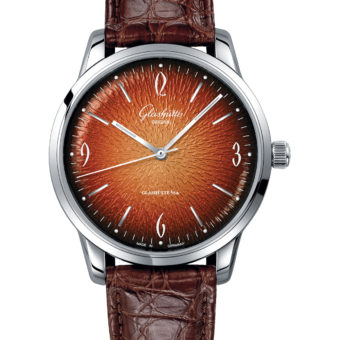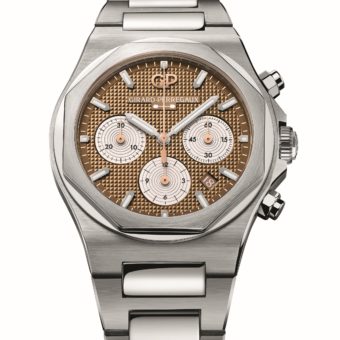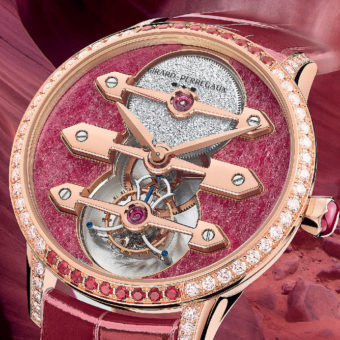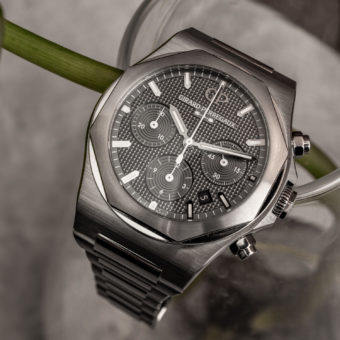Ever since the Girard-Perregaux Laureato returned at Baselworld 2016, it’s been obvious that this is the model that the brand is investing its future in. Last year was when the Laureato really took off after the GP team unveiled 34 new additions to the rapidly expanding collection. At SIHH this year (which GP returned to last year), while we didn’t get to see as many new Laureato looks, we did get to see the addition of a new complication to the famous sports model with the Laureato Chronograph. It’s a clear next step in growing the line to compete with some of the more iconic models in this crowded segment of the watch industry, namely the Audemars Piguet Royal Oak (which we covered a boatload of new releases for here) and the Patek Philippe Nautilus. And while the Laureato hasn’t had the cultural signoff that we’ve seen the Royal Oak and Nautilus have in recent years (from being name-dropped in countless hip-hop songs to appearances on the wrists of a number of television and movie stars, the luxury sports watch sphere is definitely having its pop culture moment), it has the history to back up this continued growth. If you go back to the early 1970s when the market for a sporty, everyday watch was becoming apparent (thanks, Gérald Genta), the Laureato was the second watch released — after the Royal Oak — from this developing school of design.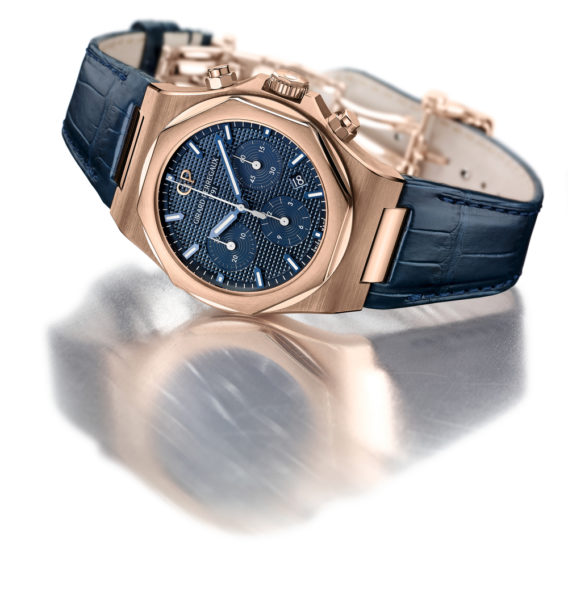
Just like last year’s new releases, the Laureato Chronograph comes in a variety of materials and sizes to appeal to a wide customer base. You have the option of either a pink gold or stainless steel case in 38 mm or 42 mm and the choice of three distinct dial colors (silver, black, and dark blue). Regardless of these variations, all the new models are distinctly recognizable as the Laureato — the polished octagonal bezel, Clou de Paris hobnail dial, and interlinked bracelet are all present and accounted for.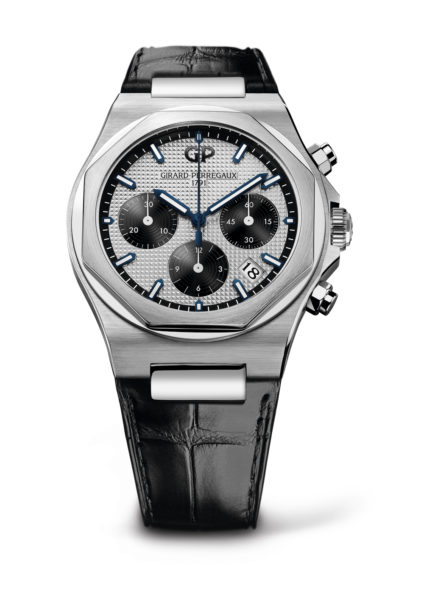
Girard-Perregaux also introduced a few new additions to the Laureato collection in ceramic. The highlights here are an all-black version at 42 mm and a 38 mm version in white or black with 56 diamonds on the bezel intended for women. The best part about this new ladies timepiece is that, unlike last year’s models that were intended for women at 34 mm and came with a quartz movement, these versions come with an automatic movement.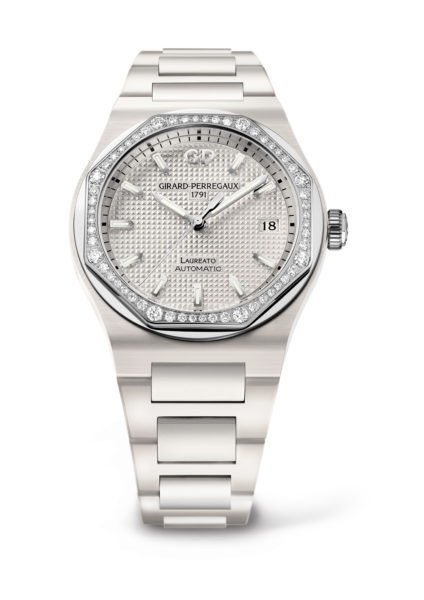
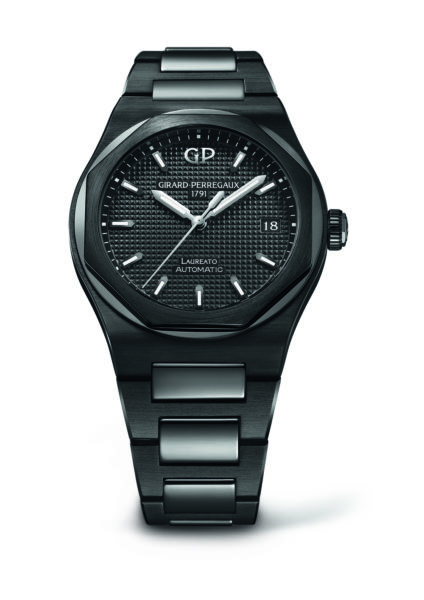
While the Laureato is key to GP’s growth in the American market as it continues to develop, Girard-Perregaux also released a few other noteworthy timepieces. The Minute Repeater Tri-Axial Tourbillon is without-a-doubt the most complicated watch that GP will release this year. The 48 mm model was crafted in titanium so the minute repeater could chime with greater intensity. This isn’t the first time that GP has developed a highly-complex minute repeater with multiple other complications. If you were around back to the late ’90s and early 2000s, you might remember that the brand released a small line of watches called the “Opera” series. The Opera One had a minute-repeating carillon tourbillon movement, Opera Two included a perpetual calendar, while Opera Three featured a perpetual calendar and a movement that had a musical pin to play Mozart’s “A Little Night Music” and Tchaikovsky’s “No Great Love on Demand.” These watches were highly limited and highly collectible. Recently, at Phillip’s Hong Kong Watch Auction in late November 2017, an Opera One sold for HK $900,000 and an Opera Three sold for HK$750,000. Based off those results, it makes sense for GP to return to this arena.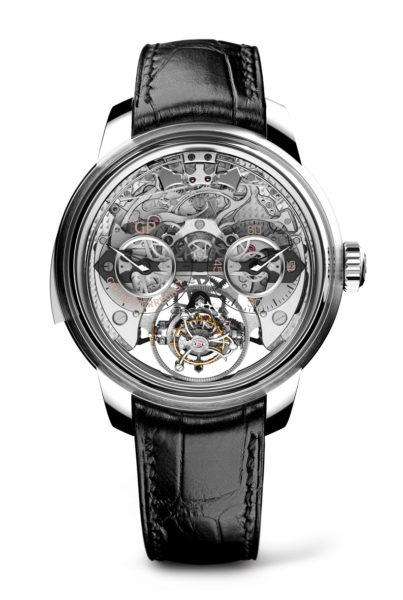
This timepiece uses a new case construction that combines the mainplate and case so the sound wave can spread directly from the gong-ring through to the mainplate and then to the outside of the watch. This eliminates the need for a solid connection between the striking gong and the exterior of the watch. The movement, Ref. GP09560-0001, measures in at 37.50 mm, and is visible through two box-type sapphire crystals that are presented on the front and back of the watch. It uses an original dial structure that enables the minute repeater mechanism to dominate the upper half of the watch. The GP team divided the dial area into two parts by using a long bridge positioned in line with the winding crown. This is reminiscent of the Girard-Perregaux “La Esmeralda” pocket watch that won the Gold Medal at the 1889 Paris Universal Exhibition. Underneath the bridge, you can find the tourbillon. This isn’t any ordinary tourbillon, rather it’s based off a reinterpretation of the tourbillon patented by A.L. Breguet in 1801. What’s special about this is that it features original multi-axis kinematics that are more suitable for a contemporary lifestyle. The 1.24-gram carriage is comprised of 140 parts and performs a first rotation in two minutes, a second in one minute (the same as a traditional tourbillon carriage), and a third in 30 seconds. This protects the balance wheel from the forces of gravity by enabling the flaws in equilibrium to successively occupy all points on this sphere within a relatively short space of time, in effect, canceling each other out.
The final notable timepiece that GP debuted this week was the Neo-Tourbillon with Three Bridges Skeleton, which is the first skeletonized take on the brand’s recognizable three-bridge tourbillon structure. GP has held a patent on the three-bridge tourbillon structure since 1884, which makes it one of the brand’s most iconic design motifs. The first Neo-Tourbillon with Three Bridges was released back in 2014, and the brand has been developing the line ever since. This new watch is 45 mm and made of titanium. The caliber has a white gold micro-rotor and uses the same caliber as the original Neo-Tourbillon. It’s a highly complex watch that is representative of the brand’s history even more so than the Laureato is.